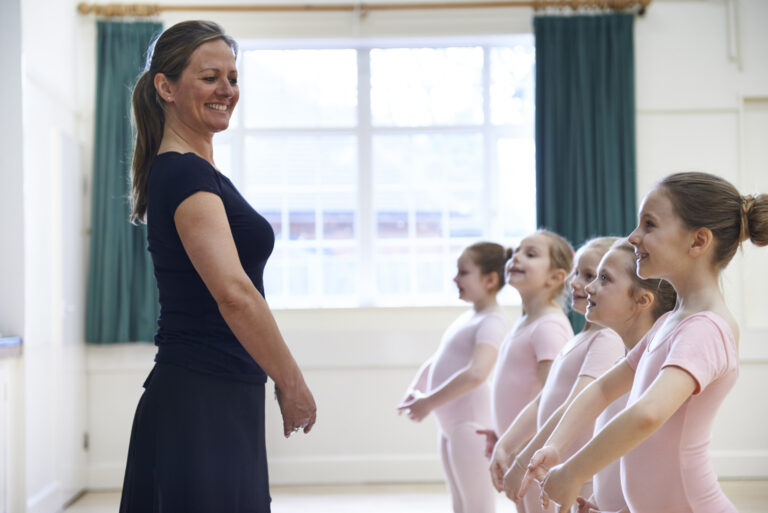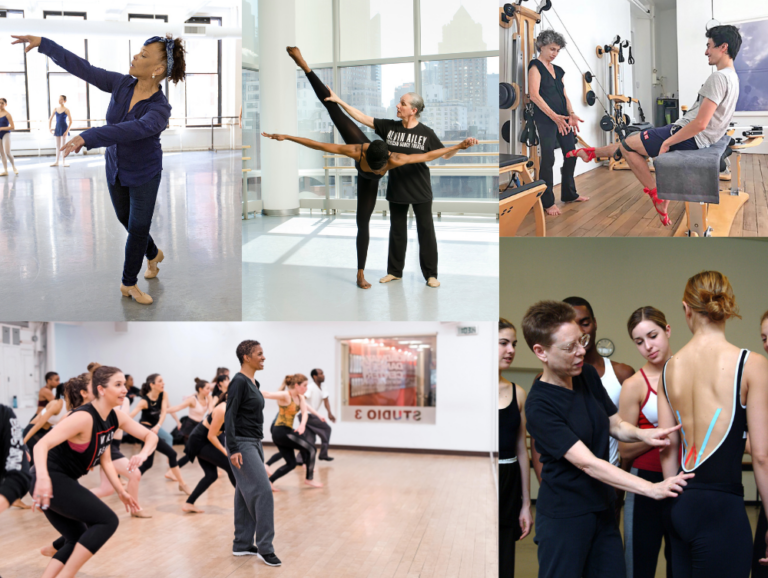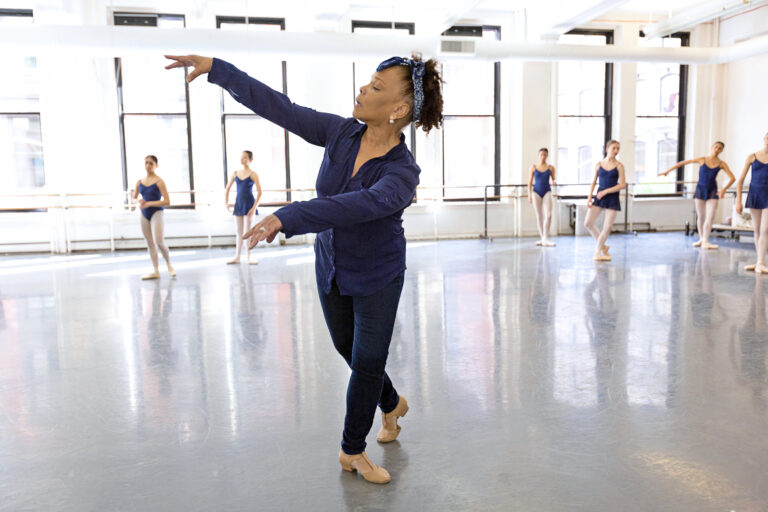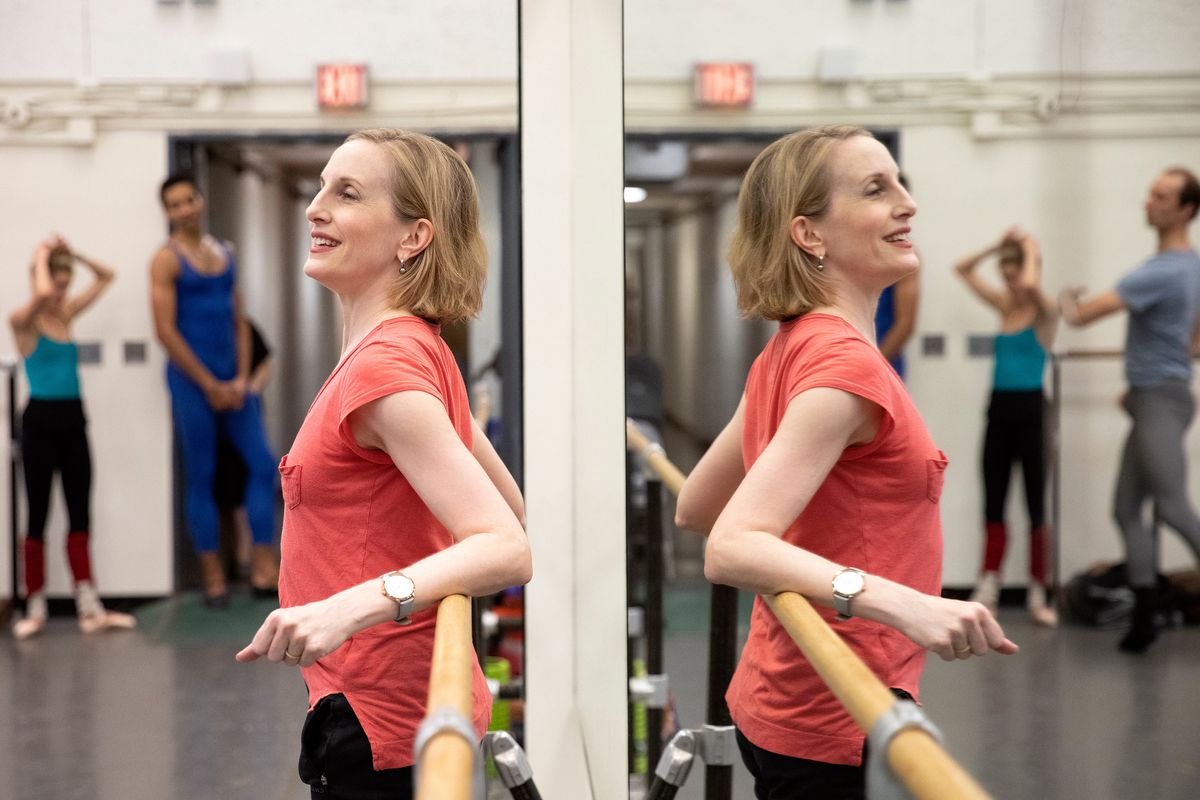
Missed the 2020 Dance Teacher Awards? Watch them on-demand here.
Most of us know Wendy Whelan for fearlessly approaching difficult tasks, whether creating a role in a new ballet, undergoing hip surgery (on camera, no less), embarking on a self-produced touring project or taking on a brand-new leadership role at New York City Ballet, where she was a principal dancer for 23 years.
But what recently, uncharacteristically, scared the now associate artistic director of NYCB? Teaching her first Instagram Live ballet class from her second home in upstate New York during the pandemic, which she says gave her a panic attack.
“I was insecure about the connection I was going to make,” she says. “I was insecure about not being able to see the dancers. I was afraid I was not going to be able to feed every person. I wanted to be a perfect teacher and fulfill everybody’s needs perfectly. And I had to throw all that out.”
The class, of course, went off without a hitch. But Whelan’s desire to give each of the hundreds of dancers watching her on their devices the perfect, personalized class speaks to why she’s become such a revered and influential figure in our field, equally known for her singular interpretations of contemporary ballets and her ability to remember the name of everyone she meets.
Indeed, Whelan forged the way for a new kind of ballerina during her tenure at NYCB, both in her anti-diva disposition and her deep interest and involvement in the artistic process. Between joining the company in 1984, becoming a principal in 1991 and retiring in 2014, Whelan created roles in contemporary classics, like Christopher Wheeldon’s After the Rain and Alexei Ratmansky’s Concerto DSCH, and is widely believed to have worked with more choreographers (including Jerome Robbins, during her early days) than anyone in the company’s history.
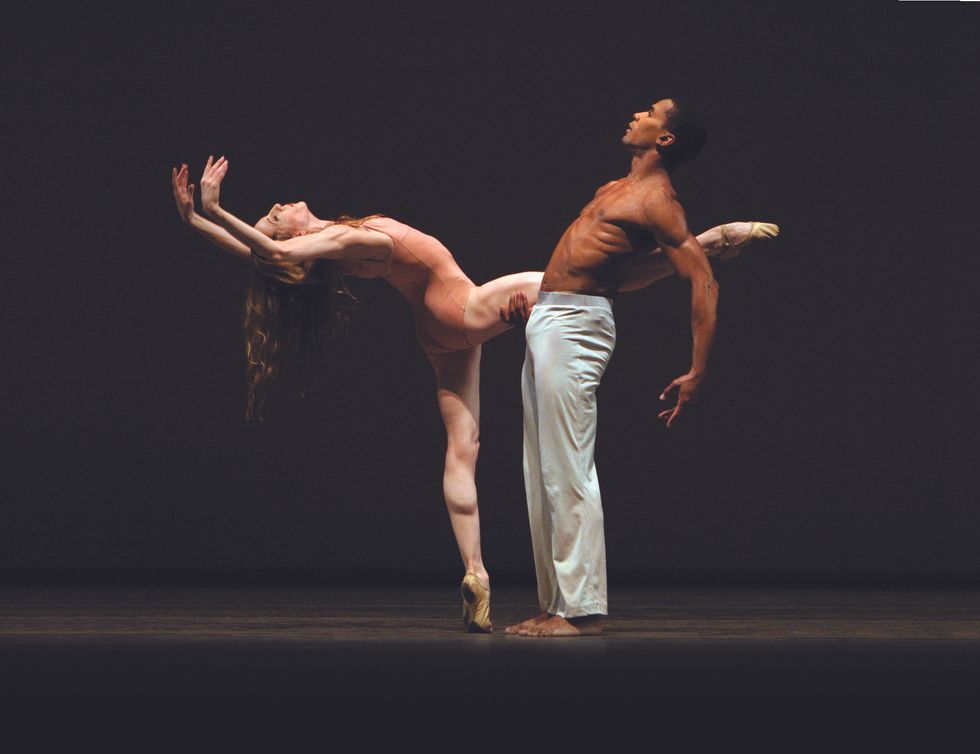
In After the Rain with Craig Hall
Paul Kolnik, courtesy NYCB
As she’s grown more comfortable with teaching, Whelan has had to let go of the perfectionism that defined her career as a dancer. “Whenever I teach, ‘throwing all that out’ tends to work better for me,” she says. “Because then it becomes more human and more real. Teaching your students that you’re not perfect is a big thing, and I think they get more out of that.”
Her humility and humanity will serve her well as she begins to reshape the culture of a company long plagued by toxicity and abuse—as the first woman in an artistic leadership position in the company’s history. Though even Whelan isn’t without her glass ceiling: After she was appointed associate artistic director to Jonathan Stafford’s artistic director, many wondered why they couldn’t just be co-directors. “That would make things easier,” Whelan says, with a laugh.
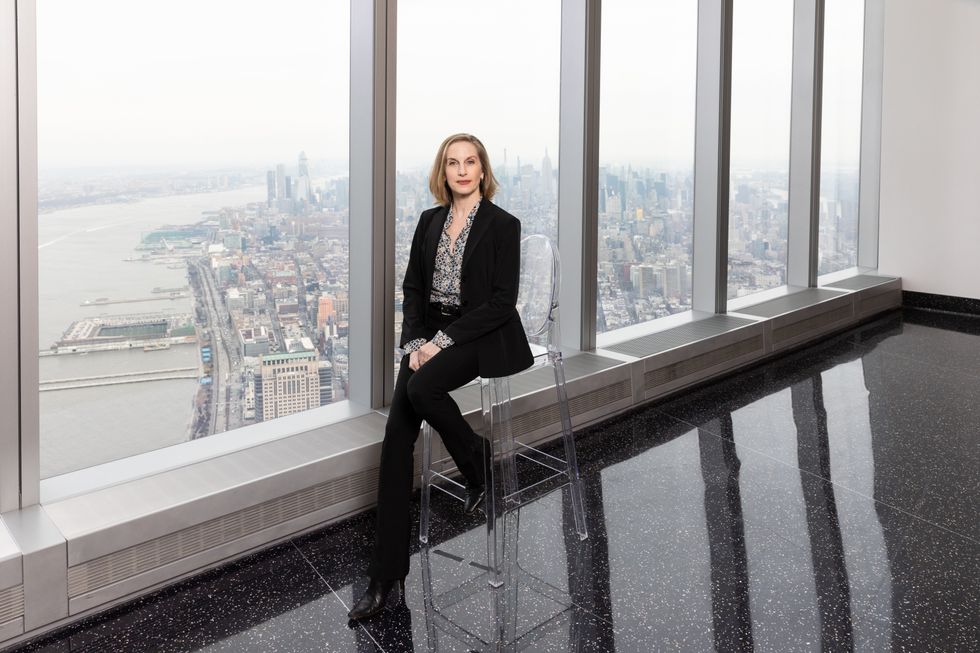
Christopher Lane, courtesy NYCB
Much of the challenge of her new position has been that of creating a role that didn’t exist before, without stepping on any toes—a task she finds particularly complicated as a woman.
So far, Whelan’s primary focus has been programming: commissioning new works and curating seasons (though we’ve yet to see a full, live season shaped by her taste—the first was supposed to be this fall, but was canceled due to COVID-19). She also normally teaches company class once a week, coaches the occasional role and partners with Stafford on communicating with dancers and donors. But in June, at home, Whelan was busy making lists—of social-distancing–friendly ballets that involve minimal partnering; of ballets set to works that don’t involve a full orchestra; of dancers who could be grouped into “pods”—in preparation for a possible winter season.
But Whelan’s impact in the field has never been defined by her current job description. Her penchant for pursuing outside projects (often performing and producing eclectic contemporary work) throughout her career as a dancer won’t end now that she’s in charge at NYCB. Once performances begin again, she’ll finish up a tour of Lucinda Childs’ The Day and begin working on a collaboration with Francesca Harper and poet Marc Bamuthi Joseph. (Though she emphasizes that NYCB will always come first.)
She’s also been influential in her belief that all ballet dancers should have experience in modern and contemporary ballet and the development of new works, and in 2018 she was key in shifting the Jacob’s Pillow summer intensive curriculum in this very direction. Her contemporary taste can be seen at NYCB, too, which now offers occasional Gaga classes for company members, and at the School of American Ballet, which has brought in Kyle Abraham, Harper and others to work with students.
And with a following as large as hers (76,300 on Instagram), her frequent, candid posts—often about social justice issues—push the envelope of what engaged leadership in ballet looks like. “I have certain political opinions,” said Whelan, a week after George Floyd’s murder in Minneapolis. “And I’m not trying to divide. But when it comes to morality, that’s where I draw the line, and I feel that it’s important as a leader to voice my opinion. We’re there to try to teach goodness through art. And that’s what the best art does: send goodness out into the world.”
This belief, and the way she acts on it—all while staying unapologetically true to herself—earned Whelan our 2020 Dance Teacher Award of Distinction. Here, she speaks about how she conquered her fear of teaching, the master teachers who’ve influenced her and what’s still on her dance bucket list.
What has your journey to teaching been like?
What kept me from wanting to teach when I was dancing was that I always felt that I didn’t know enough. But once I started, it was like I was on a 10-speed bike and I was just rolling. I was like, “Of course I know what I’m talking about; of course I can give a combination and come up with something on the spot; of course I have a lot to say.” I enjoyed it way more than I ever thought I would. I think it’s just finding who you are as a teacher. Because you don’t have to be like that teacher you always loved. You bring out the best way of being a dancer and you bring out the best way of being a teacher, and it’s very personal.

Erin Baiano, courtesy NYCB
People have a strong idea of who you are as a dancer, but who are you as a teacher?
When I was a dancer, people saw me in this not totally warm persona onstage. I think they were intrigued to see that I have a sense of humor in real life. I know the value of humor in this artform. When you have that sense of humor, it often leads to more creativity. So I try to bring that in. And I really try to pitch the right game to whoever I’m teaching, whether it be adult beginners or high-level professionals. Different people require different approaches, which is something I find fascinating and inspiring and curious.
And how do you do that?
I watch the dancers working. I can get a feel for those people who are extreme workers, who you don’t really need to prod because they’re gonna do it themselves. They just need a soft lob of an idea. And then there are those people you really need to encourage physically; you need them to get their muscles going.
Is there anything in particular you like to focus on?
I love to focus on alignment. When I was a young dancer, I had a teacher who really opened my eyes up to seeing how my structure was from the inside as a skeleton. It helped shape my dancing, and it also helped keep me injury-free for most of my career. I love teaching speed, and I play with images a lot.
Who is your biggest teaching role model?
I was a student of Willy Burmann for almost 30 years. He was my morning class vitamin for most of my career. A lot of his technique is about opposition. So as you’re going up, you’re also going down, and as you’re opening up, you’re also containing yourself. I see a lot of dancers, especially in pointe shoes, up and away from the floor. The floor is your friend, and it will help to really connect and converse with the floor. I love talking about footwork, and shaping and pointing your toes and using your extremes, all the way out through your fingertips, and all the way out beyond your toes. So really feeling long, long, long lines.
Are there any other teachers you find yourself drawing from?
All of my teachers sit right here on my shoulders. There were about 6 to 10 teachers who were so impactful, and they all are right with me, all the time. I hear myself speaking their words without knowing it. I had teachers from the full spectrum of ballet: The Royal Ballet, the Paris Opéra Ballet. I had Maggie Black. I had Suki Schorer, Stanley Williams, Alexandra Danilova. The Russians, the French, the British, the Danes. I had the whole world. So I try to give the best of what I got.
You’ve talked about how ballet students today aren’t equipped with ballet history. Why do you think this is so essential?
History is always important in helping you move forward. We want to help educate the next generation of leaders to ask: What is our artform about? Is it about royalty and aristocracy, or is it about the spirit? That said, I learned ballet history from one of my teachers when I was 10. Every Saturday morning we had an hour of history class and I hated it. I absolutely hated it. But knowing that part of the artform helps us realize that it’s not just about perfectly executing a triple pirouette. It’s bigger than that. And giving that perspective is helpful to students. Certain dancers will gravitate to it, and certain ones won’t. But, I think for those who do, those people could be more informed for leadership later.
As you’ve moved between these different roles in the dance world—dancer, teacher, entrepreneur, director—what have been the common threads for you, and when have you had to shift your mindset?
Well, teaching and dancing for me are two separate sides of the brain. One feels more structured and one feels more liquid. So I have to, like an ice cube, solidify myself and then soften myself. Since I’ve been with City Ballet again in this new role, I’ve been watching a lot and I’ve enjoyed that. My eye has gotten quicker. I’m learning about the dancers and how they each are so distinct as movers and as artists.I’ve always been a collaborator, so collaborating for me is a natural thing. Going from teaching to collaborating is also different, because with teaching, you’re the one in front, and then when you’re collaborating, you’re in the group around the table.
It was clear when you became associate artistic director at NYCB that a cultural change was needed. Where are you with that task?
Transformation of anything takes time. We realize that this is more of a marathon than a sprint. And I know a lot of people are wanting immediate change. And, of course, we would, too. But it’s a process. And the process is where the beauty is. Same thing in working on artistry. I find making progress in the institution is like making progress in the ballet studio. It’s just practice, practice, practice. There’s a commitment to action, and there’s a commitment to letting it undo itself organically with the practice of a new energy.
What are you most proud of accomplishing in your new position thus far?
I programmed three full seasons, which I had never done before. I never imagined myself doing that kind of thing. I’m proud of the work I’ve done with dancers in the studio and in postperformance talks. Seeing the response the next performance—that’s super-fulfilling, to be able to see an artist blossom from sometimes very basic feedback. I feel like I’ve done a really good job working as a team member. That’s my thing. My mom was a college basketball coach, so I love living in that kind of atmosphere.
You’ve held so many roles in the dance world and accomplished so much. What’s still on your bucket list?
I’d like to continue developing my leadership. It’s a position that I’m self-creating within NYCB, so it’s up to me to find out exactly how and what I can bring best. And of course I want to move when I can. I look forward to being in a room with people again and moving together. That’s next on my bucket list: Getting back into the classroom and moving as a student.

